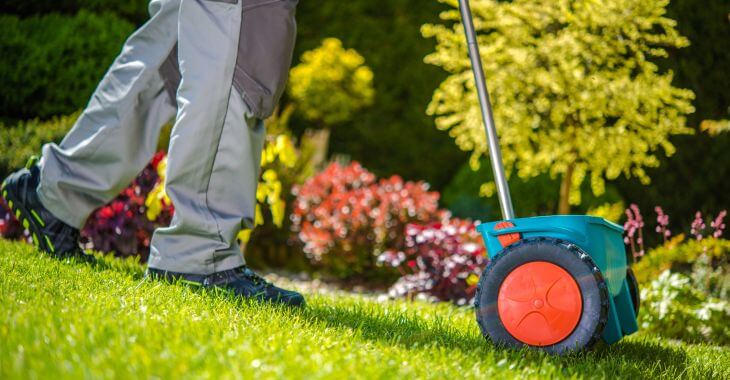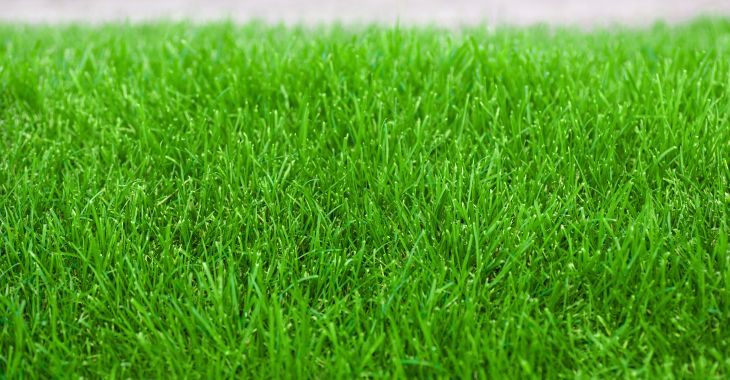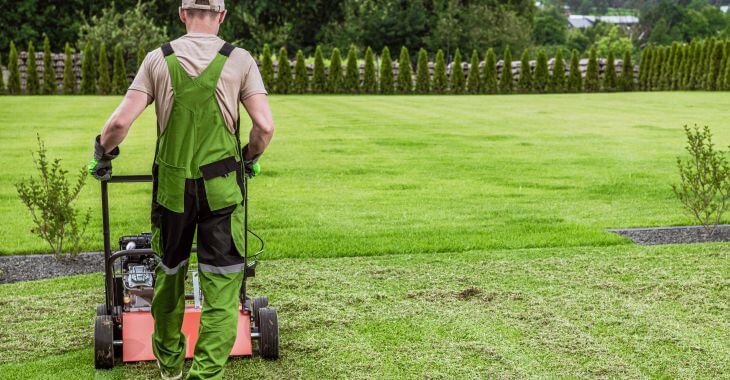When to Apply Milorganite to Your Lawn

Your lawn and landscape beds all need nutrients to keep your grass and plants thriving. Sun, water, air and certain organic compounds in the soil are vital for plants. When the soil is depleted of nutrients, you may need to add fertilizer. Do you know when to apply Milorganite to your lawn?
What Is Milorganite?
Milwaukee Metropolitan Sewerage District is the producer of Milorganite. This is one of the oldest brands of organic fertilizer and it is made from the wastewater coming from the homes and businesses of Milwaukee. The microbes that clean the water are removed and made into fertilizer.
Milorganite comes in large bags that can be applied to lawns, gardens and other planting areas to add nutrients to the soil. This is a safe and effective fertilizer that can create stronger roots for your grass, flowers, vegetables and other plants in your landscaping.
Where to Buy Milorganite
Before discussing when to apply Milorganite, let us discuss where to buy Milorganite. You can find this popular fertilizer at most stores that have a lawn and garden department or most landscape supply stores. Home Depot, Lowes and many other landscape suppliers carry Milorganite.
Milorganite fertilizer comes in different varieties and sizes. There is a basic formula that is great for lawns, as well as slow release that can help feed your lawn and plants throughout the seasons. However, it is important to know how much and when to apply Milorganite to get the best results.
How Much Milorganite Will I Need?
For lawn application, you should plan on using 32 pounds of Milorganite for every 2,500 square feet of existing grass. This is the standard bag size for this fertilizer, which you can spread over your lawn with a traditional lawn spreader. New lawns should receive 32 pounds for every 1250 square feet.
Once you buy the correct amount of Milorganite for your lawn, you can add it to your spreader. Milorganite spreader settings are different depending on what type of spreader you own or use. Some examples of Milorganite spreader settings for rotary spreaders include:
- Setting 19: This is the right setting for most Ace, Agway, Fertilome, Green Thumb and Earthway EV-N Spread rotary spreaders
- Setting 5: Lawn Crafter Quaker rotary spreader
- Setting 9: Precision rotary spreader
- Setting 11.5: Multiple types of Scotts rotary spreaders
- Setting 29: Scotts Easy Green spreader
Milorganite can be used in any spreader, but the settings will be different for each type. To ensure you find the right setting, you can visit the Milorganite website and view information on calibrating your spreader to get the right application of fertilizer for your lawn.
How Often and When to Apply Milorganite to Your Lawn
Now you know where to buy Milorganite and how much you should use for your lawn. Once you have purchased your fertilizer, you can make a plan for feeding your lawn throughout the year. Milorganite recommends a specific application schedule to ensure the best results for your yard.
Regardless of whether you live in a colder or warmer region, you should plan on applying Milorganite four times a year. However, when to apply Milorganite may be different based on your type of grass and climate.
- Cold season grasses/regions. In cooler climates, a recommended Milorganite schedule includes end of May, beginning of July, beginning of September and November (or before the first snow fall)
- Warm season grasses/regions. In warmer climates, plan to fertilize with Milorganite by the beginning of April, end of May, end of August and early to mid-October.
Existing lawns should receive 32 pounds per 2,500 square feet and new lawns should receive 32 pounds per 1250 square feet (the first year) at each application.
Tips for Applying Milorganite
It is not just when to apply Milorganite, but also how you apply it that matters. To get the most from your Milorganite lawn applications, here are a few tips to consider:
- Always mow your lawn before fertilizing
- New lawns should have been mowed three times before first application of Milorganite
- Your spreader opening should be set at 3/4 when engaged
- Walk at a steady pace when spreading the fertilizer
- Watering after applying Milorganite to your lawn is not necessary, but it will help release the fertilizer faster into the soil
- Apply half the fertilizer walking one direction, then the other half going the other direction
- If you only want to fertilize once per year, apply your Milorganite in the fall

Milorganite is one of the most popular fertilizers for lawns, and it can be used in other landscaping areas as well. If you are looking for where to buy Milorganite to enhance your lawn, your best bet is to check out the garden center at large home improvement stores such as Lowes and Home Depot.
